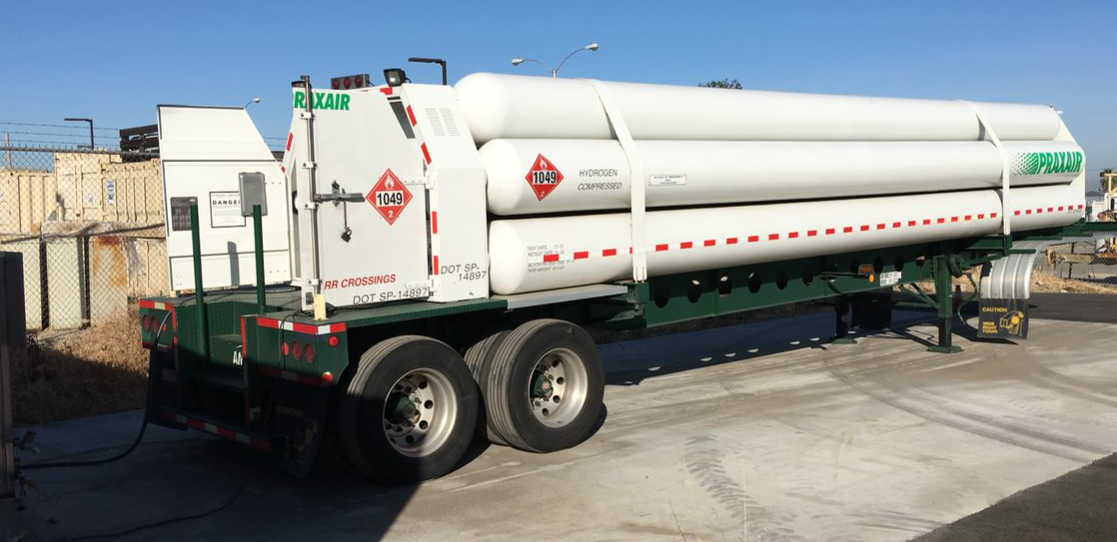Storage Vessels
Stationary aboveground storage for gaseous hydrogen generally consists of multiple cylindrical pressure vessel(s) which may be mounted in a frame and installed on a concrete foundation.
A typical hydrogen storage cylinder is elongated and may be mounted horizontally or vertically, with pressure and/or thermal relief valves mounted at one or both ends and plumbed to a vent stack.
Steel stationary storage vessels (Type I) are normally constructed to standards such as the ASME Boiler and Pressure Vessel Code (BPVC). Composite wrapped (Type III and Type IV) cylinders may also be used for stationary storage.
For information on material selection for gaseous hydrogen vessels, please see Material Compatibility.
Documentation for each vessel should include a description of the vessel, a list of available drawings or other documents, the most recent inspection results, and the responsible person's name. Vessels should also be marked in accordance with the applicable code and should be clearly marked to indicate when they must be reinspected or removed from service.
Hydrogen Gas Storage Vessels
(Photo courtesy of Shell Hydrogen)
A system should be established for identification of hydrogen pressure vessels to promote safety and reduce the possibility of confusion, especially during an emergency. Signs that say "No Smoking" and "No Open Flames" should be posted.
Tube trailers are sometimes used for ground storage. A tube trailer is a set of DOT-approved cylindrical pressure vessels tubes mounted on a trailer. The connecting piping is at the rear end of the tubes with pressure relief devices on one or both ends vented above the top of the trailer. Tube trailers are required to be constructed to meet strict requirements. For example, in the USA they must meet requirements described in Title 49 of the Code of Federal Regulations and bear a DOT permit.
Tube trailer capacities are typically 95 kg (40,000 scf) and larger.
Steel cylinders are commonly used for lower pressures typically ~21 MPa (3,000 psi). Cylinders of composite construction are often used for higher pressures up to 95 MPa (13,750 psi).
When two unloading positions are provided at a user site, tube trailers can be used for both supply and storage by swapping the empty trailer for a full one when needed.
Tube trailer with ten hydrogen cylinders
(Photo courtesy of Pacific Northwest National Laboratory)
References
ASME BPVC, Section VIII, Unfired Pressure Vessels
NFPA 55 Compressed Gases and Cryogenic Fluids Code
Title 49 of the Code of Federal Regulations (49 CFR) "Transportation"



